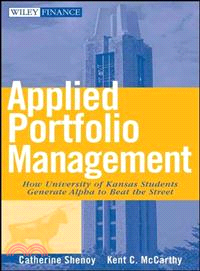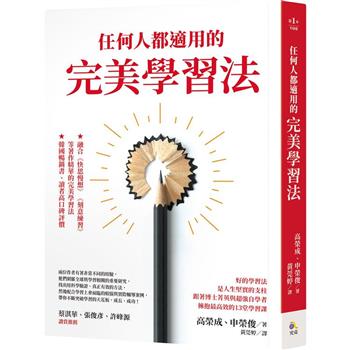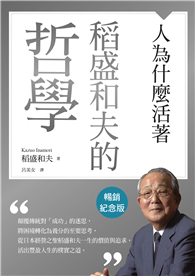| FindBook |
|
有 1 項符合
catherine shenoy的圖書 |
 |
$ 2361 ~ 3000 | APPLIED PORTFOLIO MANAGEMENT: HOW UNIVERSITY OF K
作者:Catherine Shenoy 出版社:JOHN WILEY & SONS 出版日期:2008-03-11 規格: / 282頁  共 2 筆 → 查價格、看圖書介紹 共 2 筆 → 查價格、看圖書介紹
|
|
|
- 圖書簡介
When investment professional Kent McCarthy returned to teach at his alma mater, the University of Kansas, he planted the seeds for the Applied Portfolio Management (APM) program—a course that allows students to manage a real money portfolio, which has compiled a remarkable record of investment success. Now, with this book, you’ll discover how to use the concepts covered in this class—from understanding the fundamental drivers of business success to buying at the right price—to enhance your own investment skills.
- 作者簡介
Catherine Shenoy, PhD, MBA, is Director of the Applied Portfolio Management program at the University of Kansas School of Business. She has worked for the U.S. State Department as a Foreign Service Officer in Washington, DC, and Tunis, Tunisia. Since 1993, she has taught accounting, statistics, and finance at the University of Kansas. Shenoy's research areas include corporate governance, corporate financial policies, and applications of artificial intelligence to portfolio analysis.
Kent C. McCarthy, MBA, is President and Chief Investment Officer of Jayhawk Capital Management. In 1994, he retired from Goldman Sachs, returned to Kansas, and founded the Applied Portfolio Management class. McCarthy taught the class full-time until 1995, when he founded Jayhawk Capital Management, which manages hedge funds and private equity funds primarily focused on the Chinese equity markets. He continues as an Executive Lecturer in the APM class. - 目次
Foreword.
Preface.
Acknowledgments.
Part One. Introduction to the Applied Portfolio Management Class.
Chapter 1. APM History.
In the Beginning.
How do Beginning Investors Think?
Student Groups – Short-Term Investing and Portfolio Contests.
Getting Close to the Information.
Onions, Poker, and Ants.
What about the Ants?
Things to Come.
Chapter 2. APM Guidelines.
Professional Money Managers.
Tactical Asset Allocation and Sector Benchmarking.
APM Approach.
Wrapping Up.
Chapter 3. Conventional Wisdom.
Diversification and Risk.
Efficient Markets.
Conclusion.
Chapter 4. How Students Find An Investment Edge.
Build Your Own Information Network.
Neglected Firms.
Surface Analysis.
Wrapping Up.
Chapter 5. Alpha, Sigma, Beta.
APM's Risk and Reward.
The Risk-Return Trade-off.
Other Risk Measures.
Wrapping Up.
Appendix. Risk and Return Calculations.
Part Two. Building an Investment Case.
Chapter 6. Many Ways to be a Successful Investor.
Common Traits of Successful Investors.
APM's Philosophy.
LSB Industries.
Wrapping Up.
Chapter 7. Prepping for a Case.
Getting Started.
Understand the Business.
Ready to Write the Case.
Appendix. 10-K Requirements.
Chapter 8. Writing a Case.
Case Format.
Description.
Investment Thesis.
Next Steps.
Chapter 9. Gazing into the Crystal Ball.
Pro Forma Statements.
Pro Forma Financial Statements and Free Cash Flow.
Building a Pro Forma.
Next Steps.
Chapter 10. Valuation.
Relative Valuation.
Discounted Cash Flow Valuation.
Investing is Dynamic.
Appendix. Discounted Cash Flow Formulas.
Part Three. Class Specials.
Chapter 11. Investing in China.
Financial Systems in China.
Raising Equity in China.
Company Example - China Green.
Wrapping Up.
Chapter 12. It's a Big World (After All).
Interceramic.
World Commodities.
Wrapping Up.
Appendix. Valero's Numbers.
Chapter 13. Local Biases.
American Italian Pasta (PLB).
Novastar Financial (NFI).
Inergy, L.P. and Inergy Holdings, L.P.
Tortoise Capital Advisors (and more about Inergy).
Wrapping Up.
Chapter 14. Making Corporate Governance Pay.
Board Issues.
Corporate Activists.
Oplink Campaign.
Wrapping Up.
Chapter 15. It's All About Who You Know.
APM Students.
APM Speakers.
The Last Word.
About the Authors.
Index.
|











